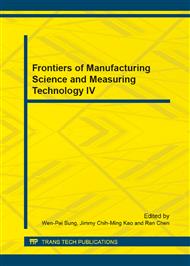p.1842
p.1848
p.1852
p.1857
p.1863
p.1868
p.1871
p.1875
p.1879
iMRAproiri: A Parallel Aproiri Algorithm Based on Twister
Abstract:
MapReduce is a current parallel computing model. Introduced MapReduce into Aproiri can make the algorithm more effective. But Apriori need to traverse the database several times to produce the final frequent itemsets accompanied with vast I/O consumption. Therefore, we put forward an algorithm named iMRAproiri by using Twister, an iterative MapReduce model, to reduce the I/O consumption. In iMRAproiri, the map function performs the procedure of counting potential candidates and the reduce function performs the procedure of summing the occurrences counts, while Twister handles the intermediate data in the distributed memory of the worker nodes. These features enable iMRAproiri to significantly reduce the amount of the time that I/O operation takes and increase the efficiency of Apriori algorithm accordingly.
Info:
Periodical:
Pages:
1863-1867
Citation:
Online since:
August 2014
Authors:
Price:
Сopyright:
© 2014 Trans Tech Publications Ltd. All Rights Reserved
Share:
Citation:


